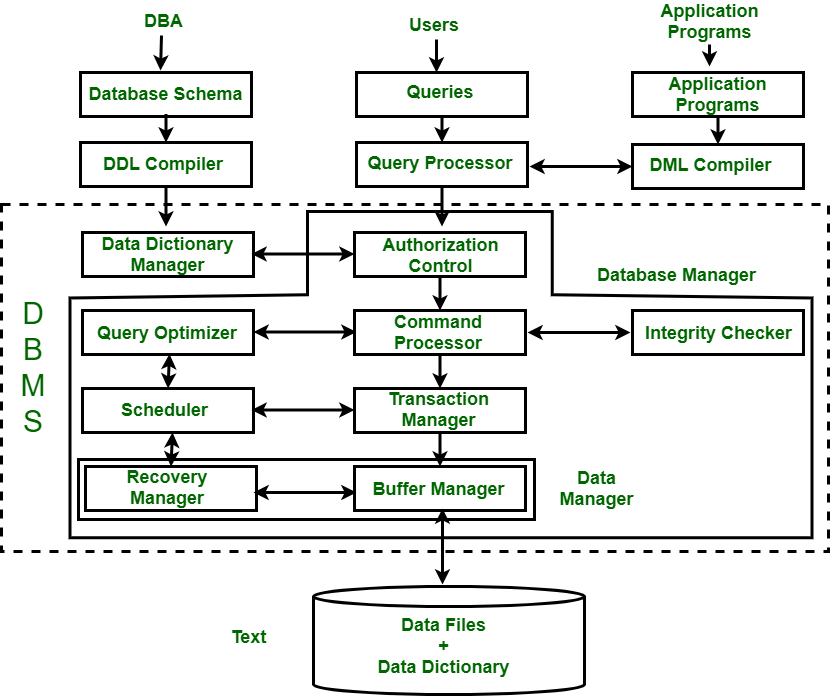The database system is divided into three components: Query Processor, Storage Manager, and Disk Storage. These are explained as following below.

Architecture of DBMS
1. Query Processor :
It interprets the requests (queries) received from end user via an application program into instructions. It also executes the user request which is received from the DML compiler.
Query Processor contains the following components –
- DML Compiler –
It processes the DML statements into low level instruction (machine language), so that they can be executed.
- DDL Interpreter –
It processes the DDL statements into a set of table containing meta data (data about data).
- Embedded DML Pre-compiler –
It processes DML statements embedded in an application program into procedural calls.
- Query Optimizer –
It executes the instruction generated by DML Compiler.
2. Storage Manager :
Storage Manager is a program that provides an interface between the data stored in the database and the queries received. It is also known as Database Control System. It maintains the consistency and integrity of the database by applying the constraints and executes the DCL statements. It is responsible for updating, storing, deleting, and retrieving data in the database.
It contains the following components –
- Authorization Manager –
It ensures role-based access control, i.e,. checks whether the particular person is privileged to perform the requested operation or not.
- Integrity Manager –
It checks the integrity constraints when the database is modified.
- Transaction Manager –
It controls concurrent access by performing the operations in a scheduled way that it receives the transaction. Thus, it ensures that the database remains in the consistent state before and after the execution of a transaction.
- File Manager –
It manages the file space and the data structure used to represent information in the database.
- Buffer Manager –
It is responsible for cache memory and the transfer of data between the secondary storage and main memory.
3. Disk Storage: It contains the following components –
- Data Files –
It stores the data.
- Data Dictionary –
It contains the information about the structure of any database object. It is the repository of information that governs the metadata.
- Indices –
It provides faster retrieval of data item.
No comments:
Post a Comment